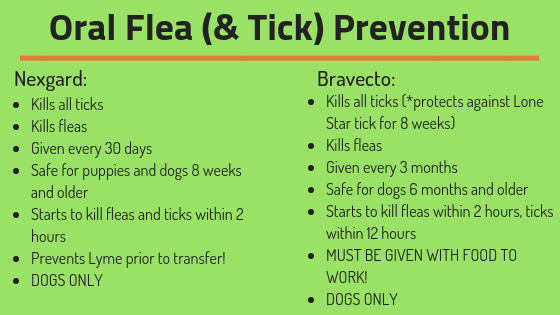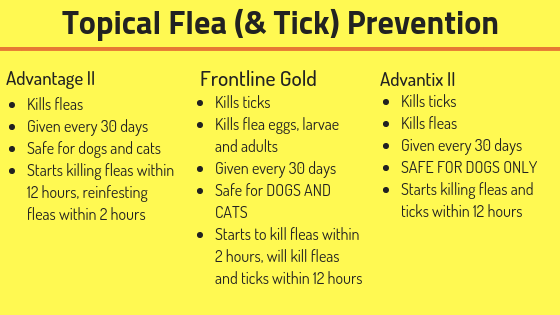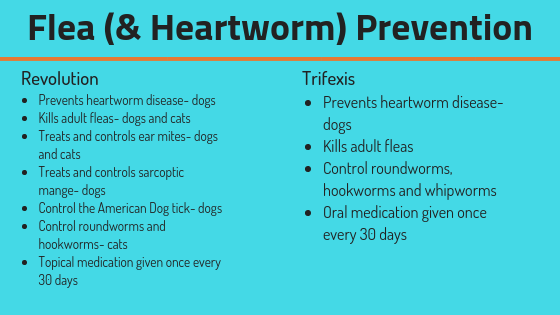Pet Flea Prevention
Fleas not only cause itching, but they can cause anemia, allergies, and harbor parasites, too!
Pet Flea Prevention
Where fleas are found
Fleas are most commonly found at the base of the tail. You will normally see what we call “flea dirt”, which is the digested blood. It looks like ground pepper in your pet’s fur. You can also see the adults moving around, but they are very, very swift-moving!
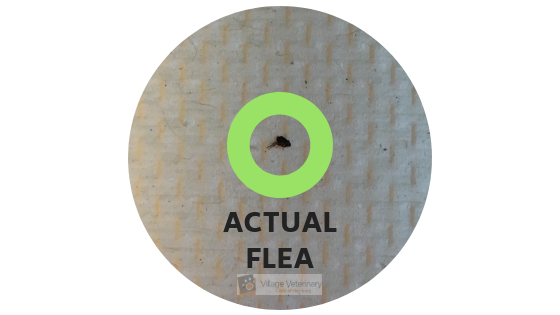
Fleas commonly prefer to feed on hairy animals such as dogs, cats, rabbits, squirrels, rats, mice and other domesticated or wild animals.
Flea Life Cycle
The life cycle of the flea is composed of the egg, larval, pupal and adult stages. Cycle length ranges from several weeks to several months and is largely dependent upon environmental conditions. With a complete life cycle ranging anywhere from 16 days to 21 months, depending on environmental conditions.
Eggs
Fleas lay about 40-50 eggs a day, thousands in a lifetime!
Flea eggs are not sticky and usually, fall to the ground immediately upon being laid. Flea eggs hatch into larvae within 1 to 12 days. Flea eggs represent about one-half of the entire flea population present in an average home.
Eggs are no larger than a grain of sand, meaning they are essentially microscopic!!!!
Larvae/Pupal
Larvae make up about 35 percent of the flea population, while the pupal stage accounts for 10 percent. They are also microscopic!!!!
Adults
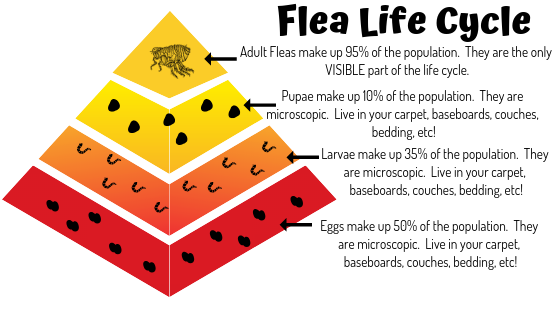

Fleas in the House
Fleas depend on a blood meal from a host to survive. They can come in on your pet (even if they go outside to do their business and come right back in). They can even come in on you, they take a ride on your shoe or pant leg without you even suspecting they are there. They are also small enough to fit through screens on doors or windows.
Fleas only need 30-40 degrees to come out of hibernation during our winter months in Hamburg (or Buffalo area)!
Although fleas do prefer warm weather, your cozy house provides the perfect environment for them to thrive in during the colder months. Freezing temperatures will kill some of them off but not the ones that are sheltered. Fleas are capable of surviving winters if they can locate shelter, such as your warm house, garages, under porches, etc. Plus, if there are no hosts to feed on, developing fleas can become dormant. This means they’ll just wait around until conditions are right again and emerge.
Fleas are a year-round problem, which is why year-round control is so important!
Adult fleas (the ones you can see) make up only 5% of the population. The other 95% are the eggs, larvae, and pupae- they are microscopic and we cannot see them! They are hidden in our carpets, furniture, bedding (pets and ours), gardens, garages, under porches waiting for a pet to walk by so when they are adults they can jump on and start the life cycle again!
Signs of Fleas
Many signs can indicate flea activity. A common indication would be pets that repeatedly scratching or grooming themselves. Flea dirt, the adult flea feces, also can indicate activity. Flea dirt looks similar to coarse ground black pepper and may be seen on the pet, in pet beds, carpets, rugs, and other areas where your pet likes to hang out. Typically you will find the flea dirt at the base of the tail, along with scabs if the pet is allergic to the bites. This area is called the caudal dorsum. If your pet is itchy at the base of its tail or down its legs or has scabs there… reasons for this problem are Fleas!… #1, 2, and 3.
- Allergic dermatitis
- Excessive scratching, licking or biting at the skin (especially the backs of legs, back end, around the base of the tail)
- Hair loss
- Scabs and hot spots
- Pale gums
- Tapeworms
Since fleas can consume 15 times their own body weight in blood, they can cause anemia, which is a loss of blood and causes great illness to pets. This is especially problematic in young puppies or kittens, where they have an inadequate number of red blood cells. Signs include pale gums, cold body temperature, lethargy, and listless.

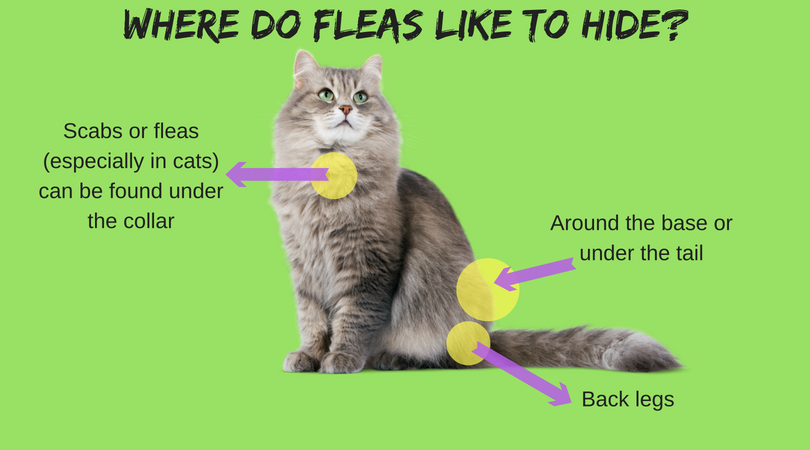
Treatment for your house includes vacuuming (cushions, rugs, baseboards, any darkened areas, etc). And continuously washing bedding or wherever your pets like to lay. If needed we do have products that we have had success with at the clinic, called Knock-Out spray. It is a premise spray, but you must use it with no pets in the area. Please consult one of the veterinarians before use.
DO NOT Use to Treat Fleas
Flea shampoos: These products can be very stripping to the oils on your pet’s skin. It can lead to dryness or flakiness. Most importantly it can remove topical flea medications! These products generally only prevent one part of the life cycle of the flea, the adult. This will stop them for a few days, but as soon as the next round of fleas hatches from their cocoons in your house they are back on your pet.
Oral or topical products from your veterinarian prevent all life stages, which will stop them from reproducing and essentially stop the life cycle completely.
Over the Counter Flea collars: These products are only effective in the area where the collar lays. This will not give your pet the full protection it needs. Fleas can still survive if they are living near their tail, which is normally where they live on your pet.
Generic over-the-counter flea medications (medications found in stores, online, etc): These flea medications are not the same as veterinary-approved medications. They generally last HALF the amount of time, 2 weeks on average, and can potentially cause dangerous side effects. These products are also known for not being labeled as what they truly are (false products), and the amount of the medication may also be incorrect. For these reasons, manufacturers do NOT back these over-the-counter products!
For more information about fleas please visit:
